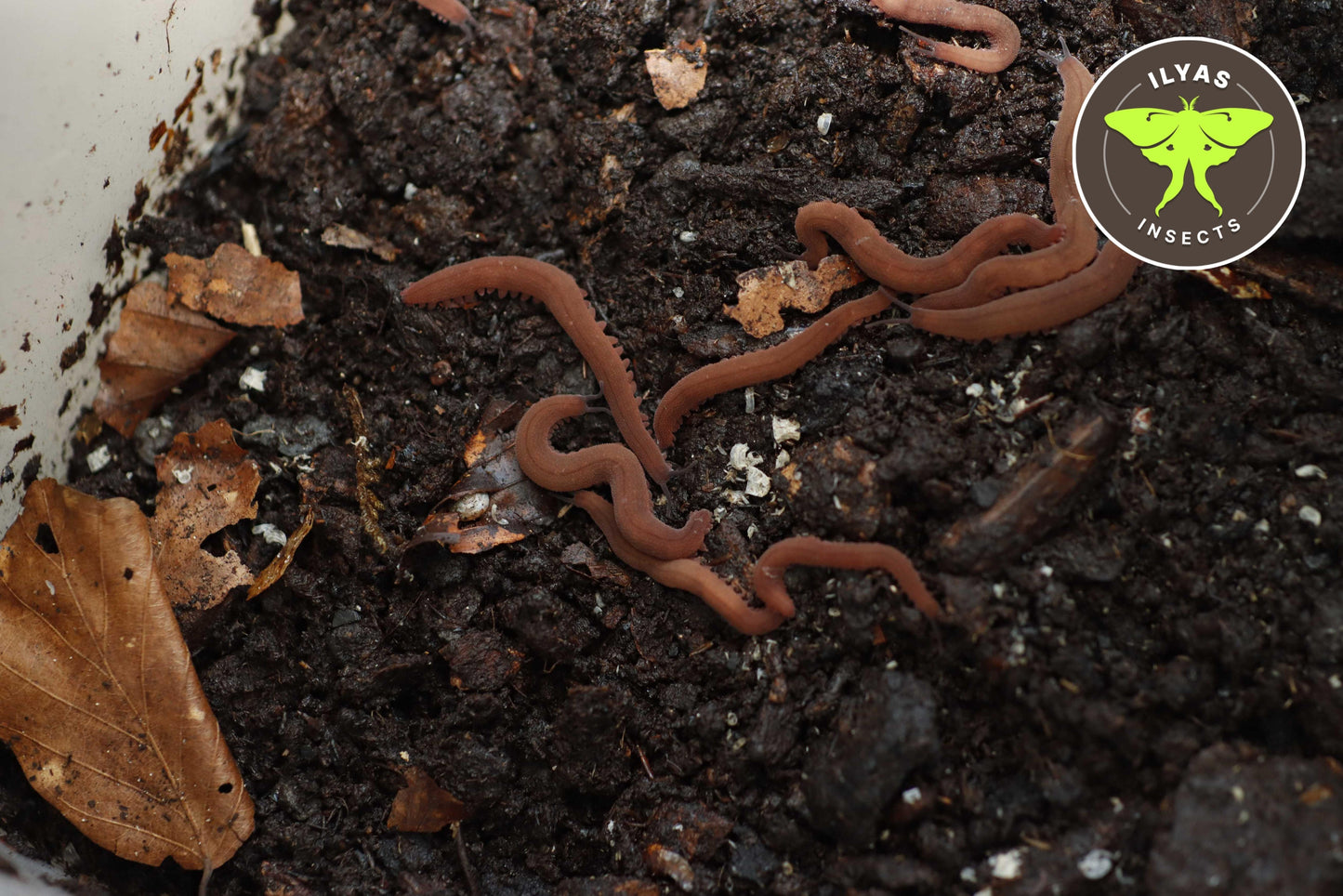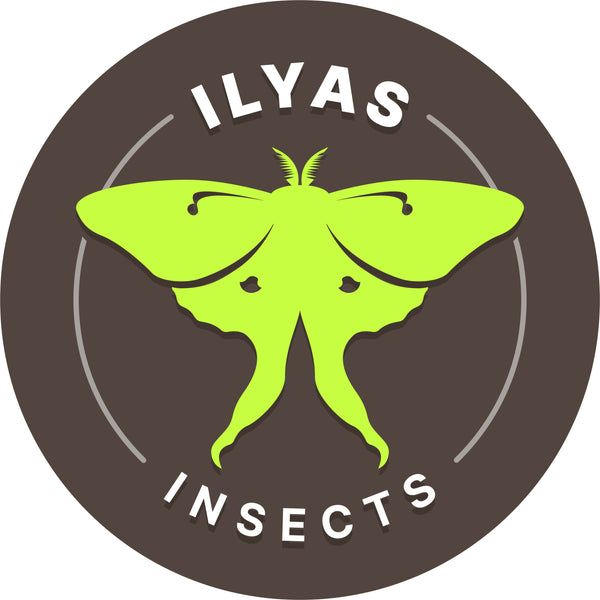Ilyas Insects
Epiperipatus barbadensis
Epiperipatus barbadensis
Kan beschikbaarheid voor afhalen niet laden
Note: This species is currently undergoing active breeding in our facility. It will be made available once we have a healthy and sustainable number of offspring.
Epiperipatus barbadensis – Barbados Brown Velvet Worm
Taxonomy & Background
Epiperipatus barbadensis is not a true arthropod. This species belongs to the phylum Onychophora, commonly known as velvet worms. Onychophorans are a distinct group of invertebrates that share a common ancestor with arthropods but are not arthropods themselves.
Native to the tropical rainforests of Barbados, this species is known for its glossy brown coloration, slow deliberate movements, and intricate hunting strategy. Velvet worms are rare in the hobby and best suited for experienced invertebrate keepers who can provide stable, specialized conditions.
Environment
Setup: Naturalistic vivarium or sealed, well ventilated container (~20×30 cm).
Substrate: Deep, loose, and moisture retentive — mix of peat moss, milled sphagnum, rinsed coconut fiber, small grade orchid bark, active charcoal, and a top layer of boiled hardwood leaf litter.
Hides: Pieces of cork bark, clumps of sphagnum moss, and occasional patches of live moss.
Drainage: Optional in simple setups; in planted vivaria, include a drainage layer of clay balls or lava rock with mesh barrier.
Ventilation: Low to moderate cross ventilation to maintain high humidity without stale air. Use fine mesh to prevent escapes.
Humidity
80–90%, maintained with a constantly moist (but never waterlogged) substrate.
Light misting with distilled or rainwater once daily or as needed.
Avoid direct spraying on the animals; mist in the evening to mimic natural condensation cycles.
Temperature
Ideal: 22–25 °C (72–77 °F).
Avoid extremes — prolonged exposure below 20 °C or above 27 °C can be harmful.
No direct sunlight or heat sources.
Diet
Carnivorous: Feeds on small live invertebrates such as crickets, roaches, fruit flies, and small isopods.
Adults: Offer 1 appropriately sized prey item every 4–5 days.
Juveniles: Feed smaller prey every 2–3 days.
Remove uneaten prey within 24 hours to prevent stress or injury.
Hunts by ejecting adhesive slime to immobilize prey before consuming it.
Behavior
Nocturnal & photophobic: Active mainly at night; avoid bright lighting.
Social: Often rest in tight groups during the day.
Reproduction: Live bearing; females may exhibit maternal care of young.
Handling: Avoid as their skin is delicate and prone to drying out.
Key Notes
Extremely sensitive to desiccation; stable humidity is crucial.
Provide a mature, microbe rich substrate to help prevent mold outbreaks.
Best kept by advanced keepers familiar with high humidity, low ventilation enclosures.
caresheet based on the BoogieDownBugs guide and own experience
Not shipped, only pickup at home or reptile expo's
Contact me if you want to buy this species, they are available but not through the site.
Deel


